Three things you might not know about the Budongo Conservation Field Station
11/03/2019 in Conservation
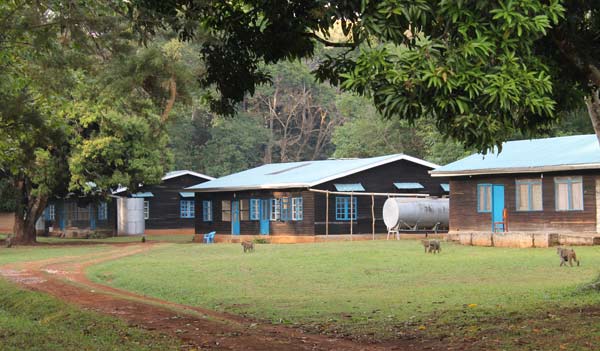
Above: Budongo Conservation Field Station - photo by J.Dove
Having worked at RZSS for eight years, I have heard lots about the Budongo Conservation Field Station (BCFS) we support in Uganda. I’ve even met a few members of the fabulous team during their visits to Scotland. In February, as part of my new role as Head of Conservation and Science Programmes, I was delighted to get the chance to finally visit the field station for myself.
The Field Station's mission centres around the protection of the chimpanzees and their Budongo Forest habitat, and RZSS is proud to have supported their work since 2005. Like most successful conservation projects, the work of the BCFS requires operating across many fronts: understanding fundamental biology and ecology, monitoring heath, tackling threats, changing local attitudes.
Following my visit, I thought I would share some of my first-hand impressions with you on things that you might not know about life in the Budongo Forest:
Budongo never sleeps
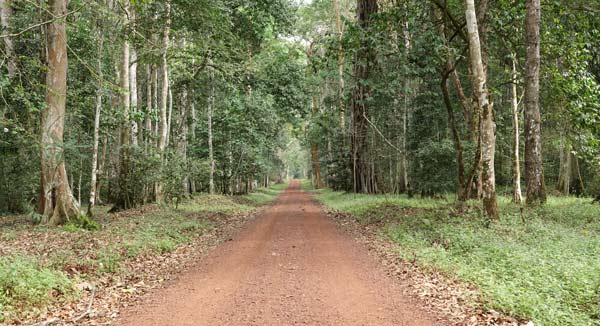
Above: The Royal Mile - a majestic entrance into the Budongo Forest - photo by J.Orsi
It was a long 5 hour car journey to get to the Budongo Forest from Entebbe Airport. We arrived just as dusk was settling on the “Royal Mile” - the long avenue through the forest that leads to the camp. As soon as I stepped out of the car, I was hit by a wall of animal sounds in the cooling night air. The solid thrum of cicadas forming a backdrop to a symphony of squawks, howls, tweets, trills and screeches. NATURE IS HERE! Whether it's black and white colobus monkeys bouncing through camp, baboons squabbling over their patch, hornbills flapping up into the mango trees and of course a chimpanzee sloping along the edge of the forest - something is always going on and someone is talking about it.
Below: listen to the haunting calls of the tree hyrax
The scream of the tree hyrax is renowned for keeping visitors awake at night. As I walked across camp that evening, Orion and the southern cross above, the night air seemed to consist only of their screeches piercing the darkness of the forest. “Was I going to be kept awake?” I wondered as I crawled under the mosquito net (one shrill sound I definitely did not want to hear). Not a chance. The journey had been too long for that.
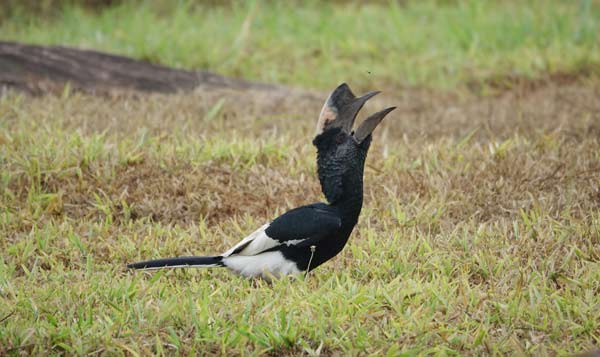
Above: The Field Station is teeming with wildlife, like the hornbill - photo by J.Orsi
The screeches were there to greet me again when i awoke in the morning, before the sun started to rise, casting a red glow over the lower camp. Of course, this cacophony of noise is an indicator of the fabulous biodiversity surrounding the camp and what makes it such a priceless base for research. For the last 30 years, the forest has been studied and protected for all of its richness: trees, amphibians, birds, and mammals.
Fantastic eyesight is needed to protect chimps
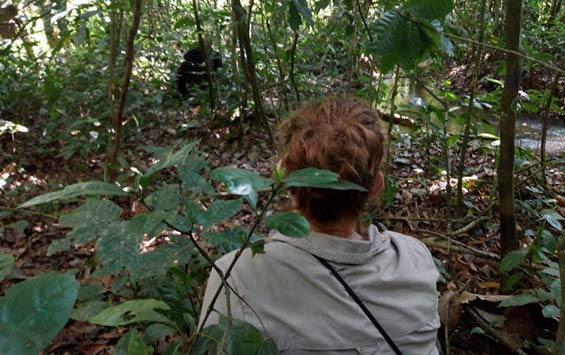
Above: Observing the Sonso chimpanzee community in the Budongo Forest - photo by H.Senn
To see the chimps themselves does not require particularly good eyesight. In fact the absolute highlight of the trip was being able to stand only metres from a group of chimps, seemingly oblivious to me, as they were having a quarrel. Dominant male Hawa was exerting his alpha male status over number 2 Musa and number 3 Frank. The chimps have been the subject of a long-term behavioural study and each individual, and their life-stories, have been documented by the BCFS team and the visiting researchers who come from across the world to work with them. The chimps have been habituated to human presence however strict rules must be observed when entering the forest in order to maintain this special relationship.
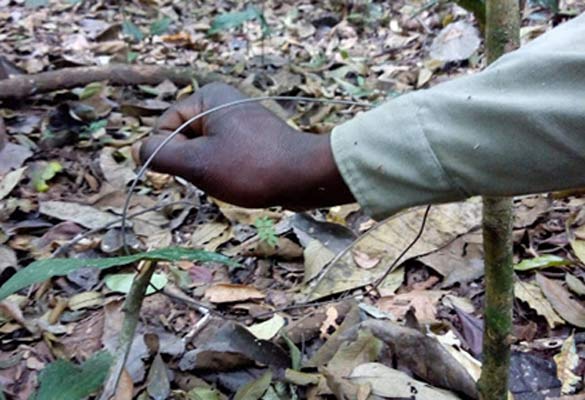
Above: A BCFS snare patrol ranger demonstrates how to set a snare - photo by H.Senn
BCFS employs a team of snare patrollers who comb the forest for traps set by local hunters trying to catch duikers and other forest antelope. This is where the need for good eyesight comes in.
These traps often miss their intended targets and ensnare chimps, resulting in horrible injuries (which the BCFS vet team has become expert in treating) and in some cases death. For those not used to walking in the forest, the contrast as the light falls to the forest floor through layers of canopy and a mesh of creepers takes adjusting to. The hair-thin snare wire is almost impossible to pick out in the dappled light even once you know it is there. An unsuspecting animal will walk right through and feel the noose tightening when it is too late.
The team move through the forest looking for the signs of cut sticks - a pale fleck of exposed wood marking a stave which the noose is tied to. The patrol move in teams of two, breaking the vegetation stems in the undergrowth every few metres to mark the way that they have passed. We walked for hours, the ground sometime rising or falling, the character of the vegetation changing slightly. Sometimes we suddenly came across a river. The patrollers whistle to each other to signal where they are. It would only take a few minutes walking in the forest, and a few thoughtless turns, for the untrained to become completely lost. Dr Fred Babweteera, the Director of BCFS, and driving force behind the charity admits that he once nearly spent the night in the forest thinking he was lost, only to find that he was metres from a path as he finally resigned himself to collecting fire wood for the night…. As someone who loves to spend time outside, I am always in awe of those who move with utter confidence through the natural environment. We think we know so much, but actually most of us have all but lost the skills needed to function independently in the natural world. This is one of the many reasons why BCFS is investing a lot of time with nearby schools to ensure that local children feel connected with the forest and native wildlife.
Baboons don't like cabbage but people do
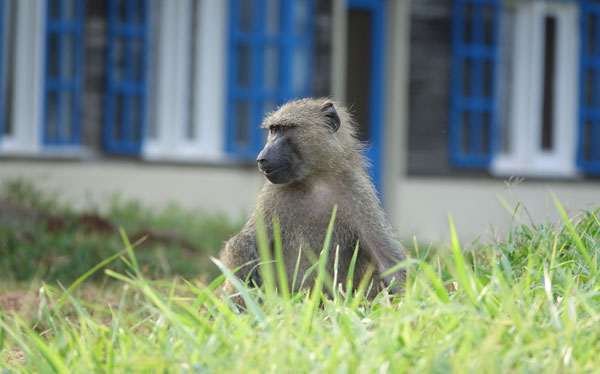
Above: One of the many baboons that frequent the camp - photo by J.Orsi
It is no surprise that the biggest threats to chimps come from humans, and mitigating some of these factors is absolutely vital to long-term conservation success. BCFS has been working with local communities try build a sense of understanding and responsibility towards the local chimpanzees troops. Vital to this process is helping farmers to feel more secure that their own welfare is not at risk from crop raiding. I was very lucky to meet some of the participants of the alternative livelihoods project, set up by BCFS in partnership with RZSS and the Darwin initiative.
The project works by providing local people with ‘starter herds’ of 2-3 goats in exchange for a commitment to stop hunting bush meat in the forest. The project also aims to provide participants with training on alternative ways of life, and improved farming methods. Certain crops are more prone to crop raiding than others, for example the delicious local sweet potato, and require guarding day and night. Local farmers can quickly lose their livelihood in a swoop of the troop and are completely tied to watching over their crops, meaning they have not time for other activities which could provide additional income. The alternative livelihoods programme helps local farmers to identify crops which are more resilient and varieties that can provide a more secure level of income.
During my trip I met a farmer who was now planting rice and, as a result, now has enough money to buy a husking machine which he plans to rent out to others. Another farmer was diversifying into a variety of crops including cabbage. It may not be as delicious as sweet potato, but crucially, it is immune to baboon raiding and therefore a more reliable source of income. We stopped on the way back to camp to buy another slightly bitter green vegetable called dodo, from a third farmer. More leafy greens providing extra cash for those living around the forest - and a delicious supper back at camp for us.
By the time we got back to the Field Station it was getting dark and those tree hyrax were at it again.
RZSS is extremely grateful to the players of People's Postcode Lottery for supporting our conservation work.

Featured Articles

An update from the Budongo Forest
19/04/2024 in Conservation

Edinburgh Zoo named best zoo in Scotland
15/04/2024 in Edinburgh Zoo

























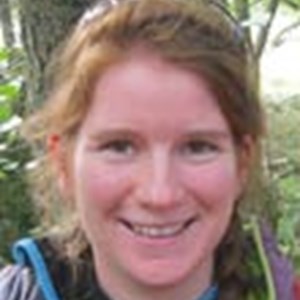
Follow EZ